Leopard (Panthera pardus)
The leopard is a powerful and majestic big cat that roams the forests, grasslands, and deserts of Africa and Asia. With its distinctive spotted coat, muscular body, and lightning-fast reflexes, the leopard is a true icon of the animal kingdom, embodying the spirit of strength and grace. From ancient mythology to modern wildlife conservation efforts, the leopard has captured the imagination of people around the world, inspiring awe and wonder with its incredible hunting abilities and unique adaptations. In this article, we will explore the world of the leopard, examining its biology, behavior, and cultural significance, and uncovering the secrets behind its incredible success as a top predator. So get ready to embark on a thrilling journey as we discover what makes the leopard one of the most fascinating and beloved big cats in the world.
The leopard is the fourth largest cat in the world (after the tiger, lion, and jaguar). Leopards live in Africa and Asia. These animals can be seen in thick, humid forests, they also like spending time near water. Leopards also inhabit deserts, savanna regions, and mountains. These animals are among the most beautiful big cats – their limber bodies covered with soft, spotted fur are awe-inspiring.
Classification
- Class: Mammal
- Family: Felidae
- Subfamily: Pantherinae
- Genus: Panthera
- Species:
African leopard (P. p. pardus), Amur leopard (P. p. orientalis), Arabian leopard (P. p. nimr), Indian leopard (P. p. fusca), Indochinese leopard (P. p. delacouri), Javan leopard (P. p. melas), North-Chinese leopard (P. p. japonensis), Persian leopard (P. p. saxicolor), Sri Lankan leopard (P. p. kotiya)

Characteristics
The leopard (Panthera pardus) is a medium-sized wild cat with males weighing between 37 and 90 kg and females weighing between 28 and 60 kg. It can be found in a variety of habitats across Africa and Asia. It is an agile and carnivorous predator, known for its ability to hunt a wide range of prey, from small rodents to large ungulates.
Leopards are characterized by their beautiful, spotted coat, which provides camouflage in the dappled light of their forest and savanna habitats. The spots, called rosettes, are circular in shape and are arranged in a circular pattern on the leopard’s coat. The leopard’s coat is typically yellow to golden in color, with black spots and rosettes. The rosettes are smaller and more densely packed on the leopard’s head and neck, and larger and more widely spaced on its back and legs.
Leopards are solitary animals and are usually active at dawn and dusk. They are excellent climbers and are known for their ability to drag their prey up into trees to eat in peace and safety. Leopards are also strong swimmers and have been known to prey on fish and other aquatic animals.

Coloration
Leopards typically have a yellow to golden coat, with black spots and rosettes. However, there are several variations in coat coloration that can occur in leopards, which can be influenced by genetics, environmental factors, and other factors.
One variation of leopard coat coloration is the black panther, which is a leopard with a coat that appears entirely black due to a high concentration of pigment in the hair. Black panthers are not a separate species, but rather a color variant of the leopard. Black panthers can occur in both leopards and jaguars, and are most commonly found in humid forests in South and Southeast Asia and in parts of Africa.
Another variation of leopard coat coloration is the white leopard, which is a leopard with a coat that appears white or cream-colored due to a lack of pigment in the hair. White leopards are extremely rare and are not a separate species, but rather a color variant of the leopard. They are most commonly found in parts of India and Africa, and are often associated with spiritual or mythical significance in these regions.
It is worth noting that coat coloration in leopards is not fixed, and can vary over time and with changes in the environment. Leopards may also exhibit different coat coloration at different stages of their life, with their coat becoming darker as they grow older.
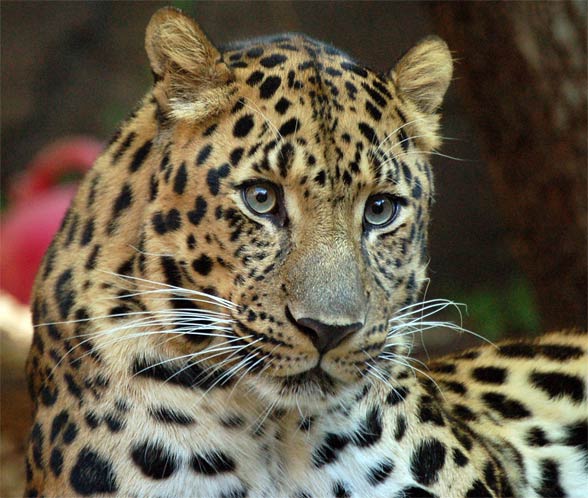
Behavior and ecology
Leopards are solitary animals and are usually active at dawn and dusk. They are excellent climbers and are known for their ability to drag their prey up into trees to eat in peace and safety. Leopards are also strong swimmers and have been known to prey on fish and other aquatic animals.
Leopards are carnivorous predators and have a wide range of prey, including small rodents, birds, reptiles, and larger ungulates such as antelopes, deer, and pigs. They are skilled hunters and use stealth and surprise to catch their prey. Leopards are also known to scavenge for food when prey is scarce.
Leopards are territorial animals and mark their territory with urine, feces, and scratch marks on trees. They are solitary animals and generally do not form large groups, except for females with cubs. Female leopards have a gestation period of around 90 to 105 days and give birth to a litter of 1 to 3 cubs, which they raise alone. Cubs are born blind and are dependent on their mother for survival.
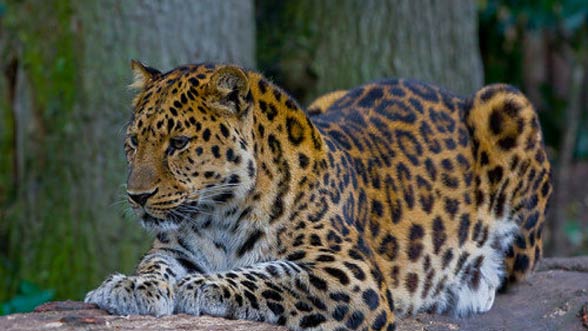
Distribution and habitat
Leopards are found in a variety of habitats across Africa and Asia, including forests, grasslands, savannas, and mountainous areas. They are adaptable animals and can survive in a range of different environments, from tropical rainforests to arid deserts.
In Africa, leopards are found in a wide range of habitats across the continent, including the rainforests of West and Central Africa, the savannas of East and Southern Africa, and the mountains of North Africa. They are also found on the Arabian Peninsula, in parts of the Middle East, and in parts of South and Southeast Asia.
Leopards are solitary animals and are generally not found in large groups. They have a wide range and are known to travel long distances in search of prey and territory. They are adaptable animals and can survive in a range of different environments, from tropical rainforests to arid deserts.
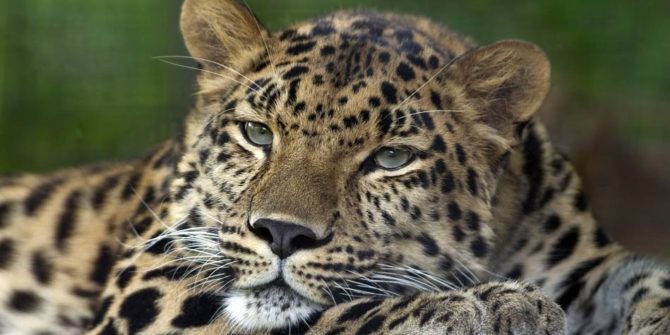
Hunting and diet
Leopards are carnivorous predators and have a wide range of prey, including small rodents, birds, reptiles, and larger ungulates such as antelopes, deer, and pigs. They are skilled hunters and use stealth and surprise to catch their prey. Leopards are also known to scavenge for food when prey is scarce.
Leopards are solitary animals and hunt alone, using their strong bodies, powerful legs, and sharp claws to catch and kill their prey. They are known for their ability to drag their prey up into trees to eat in peace and safety, and will often cache their kill in a tree to protect it from other predators.
Leopards have a diverse diet and are opportunistic feeders, meaning they will eat whatever prey is available to them. They are known to hunt a wide range of prey, from small rodents to large ungulates, depending on what is available in their habitat. Leopards are also known to scavenge for food when prey is scarce, and will eat carrion (dead animals) if necessary.
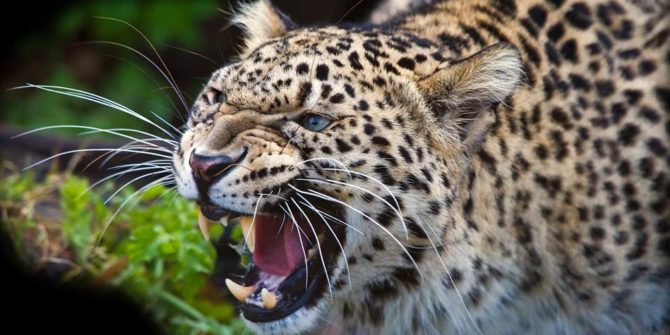
Enemies and competitors
Leopards are carnivorous predators and are at the top of the food chain in many of the ecosystems in which they live. However, they do have natural enemies and competitors that can pose a threat to their survival.
One of the main threats to leopards is habitat loss and degradation, which can reduce the availability of prey and suitable living spaces for these animals. Leopards are also threatened by poaching, as their beautiful pelts and body parts are highly valued on the black market.
Leopards may also face competition for prey and territory from other large carnivores, such as lions, tigers, and hyenas. In some cases, leopards may be killed by these animals in territorial disputes or when competing for food.
Despite these threats, leopards are able to thrive in a wide range of habitats and are adaptable animals. Conservation efforts are underway to protect leopards and their habitats, including efforts to reduce habitat loss and poaching, and to increase public awareness of the importance of leopard conservation.
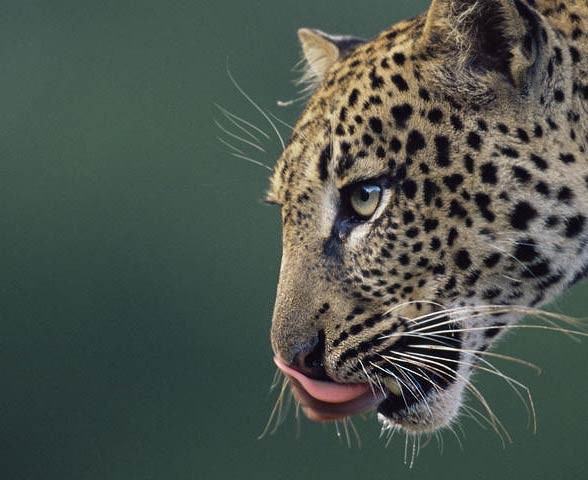
Reproduction and life cycle
Leopards (Panthera pardus) are solitary animals and reproduce independently, without the help of a mate or a social group. Female leopards have a gestation period of around 90 to 105 days and give birth to a litter of 1 to 3 cubs, which they raise alone. Cubs are born blind and are dependent on their mother for survival.
Female leopards give birth in a den or other sheltered area and will stay with their cubs for the first few months of their lives, teaching them how to hunt and survive on their own. Leopards are born with a spotted coat, which provides camouflage and helps protect them from predators.
Cubs are weaned at around 3 months of age and begin to accompany their mother on hunting trips. They start to hunt on their own at around 6 months of age, and are fully independent at around 1 to 2 years of age.
Leopards have a lifespan of around 12 to 17 years in the wild, although some individuals have been known to live longer. They reach sexual maturity at around 2 to 3 years of age and may reproduce throughout their lives.
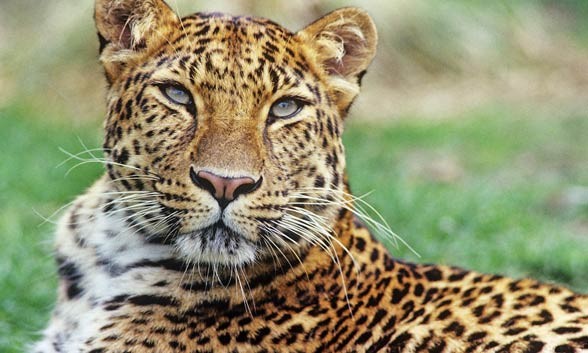
Trees – favorite resting place
Leopards are much smaller and lighter than lions or tigers, which makes them excellent climbers. They spend the majority of their time on trees, sleeping or resting among branches. They also drag their prey up trees, so that they’re not bothered by hyenas or vultures during their meal.
Leopard – the most mysterious cat
Leopards are the most mysterious among big cats. They are extremely careful and alert, so it is difficult to follow their lifestyle even in reserves. Thanks to their fur coloration – mostly yellow with black spots – a leopard hidden in grass or tree branches is practically invisible. There are also individuals with black fur.
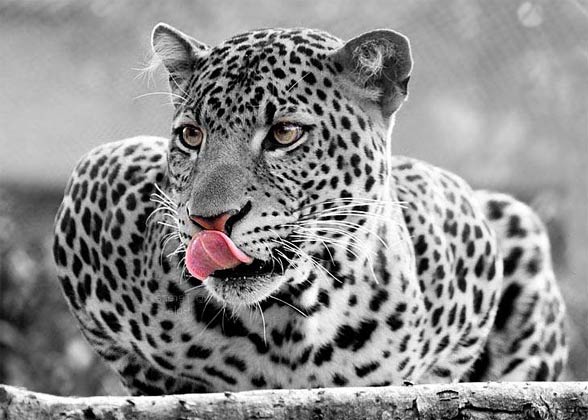
Leopard – black panther
Among leopards, similarly to jaguars, apart from spotted individuals, there are also so-called black panthers. These are melanistic leopards whose fur color is caused by the larger amount of a pigment called melanin. When you look closely at a leopard’s fur, you can see its characteristic spots, because the fur isn’t one hundred percent black.
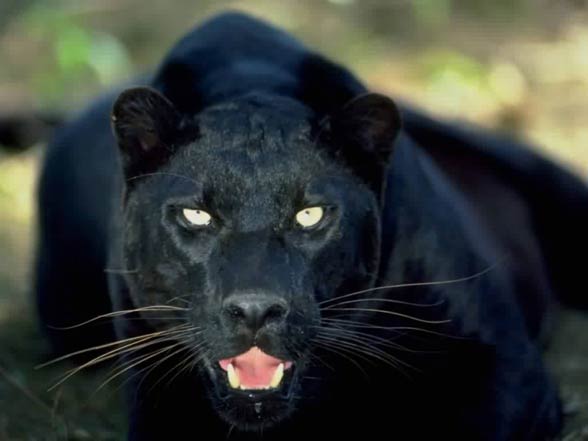
Leopard and jaguar – a comparison
The leopard is often mistaken for the jaguar, which is, contrary to the leopard, a very muscular cat, and although they’re similar in appearance, the jaguar’s body is more robust. The leopard has slenderer legs and a smaller chest. Apart from its appearance, the jaguar may be distinguished from the leopard by the look of their spots – the jaguar’s rosettes have small spots in the center. Furthermore, the jaguar and the leopard inhabit different areas.

Leopards can be dangerous to humans
The leopard is a very predatory cat, also dangerous for humans. It hunts medium-sized animals, mostly monkeys, antelopes, boars, and deer. The leopard also won’t refuse any smaller prey. It attacks bigger animals jumping onto their back and grasping their necks with its teeth. To catch its prey, the leopard can precisely leap for a great distance. Moreover, it hides the food waste on trees, where it returns only when it’s hungry, because it isn’t very fond of carrion. Because of being hunted for their valuable fur, leopards are endangered.
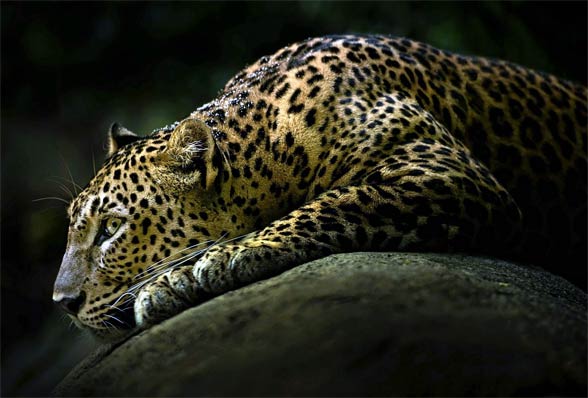
Conservation
Leopards (Panthera pardus) are endangered in some parts of their range due to habitat loss and poaching. They are listed as vulnerable on the International Union for Conservation of Nature’s (IUCN) Red List of Threatened Species.
Habitat loss is a major threat to leopards, as it reduces the availability of prey and suitable living spaces for these animals. Leopards are also threatened by poaching, as their beautiful pelts and body parts are highly valued on the black market.
Conservation efforts are underway to protect leopards and their habitats, including efforts to reduce habitat loss and poaching, and to increase public awareness of the importance of leopard conservation. These efforts may include the creation of protected areas and national parks, the implementation of conservation laws and regulations, and the establishment of conservation programs and partnerships.
In addition to these efforts, education and awareness campaigns can help to increase public understanding of the importance of leopard conservation and encourage people to support conservation efforts.
Overall, the goal of leopard conservation is to ensure that these animals have a secure and sustainable future in the wild, and to protect the ecosystems in which they live.
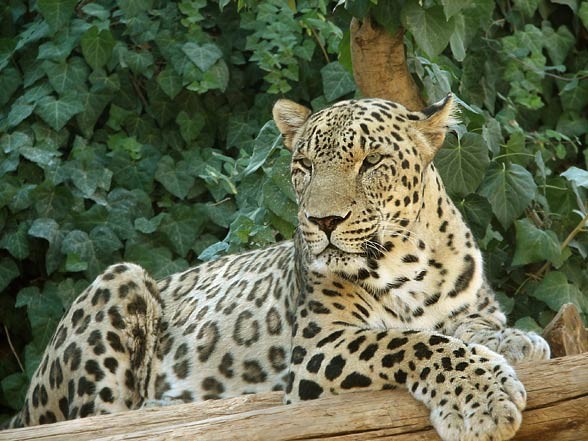
In Cultural
Leopards have a long history of cultural significance and have been revered and respected by many cultures around the world. In many cultures, leopards are seen as symbols of power, strength, and nobility, and have been depicted in art, literature, and folklore for centuries.
In ancient Egyptian culture, leopards were revered as symbols of royalty and were often depicted in art and sculptures. In ancient Greek culture, leopards were associated with Dionysus, the god of wine and celebration, and were also seen as symbols of strength and courage.
In some African cultures, leopards are seen as symbols of royalty and are associated with spiritual and cultural traditions. In many cultures, leopards are also seen as symbols of stealth and cunning, and are revered for their hunting skills.
In modern times, leopards continue to hold cultural significance and are admired for their beauty, grace, and power.

In captivity
Leopards can be kept in captivity in zoos, wildlife parks, and other facilities. In captivity, leopards are provided with a controlled environment and a diet of prepared food, and are often housed in enclosures that mimic their natural habitat.
There are several advantages to keeping leopards in captivity, including the opportunity for research and conservation efforts, the opportunity for public education and awareness, and the ability to provide medical care and attention to individual animals.
However, there are also several challenges to keeping leopards in captivity, including the need to provide suitable habitat and diet, the need to ensure the physical and psychological well-being of the animals, and the need to manage the risks associated with housing potentially dangerous predators.
In general, it is important to ensure that leopards in captivity are treated humanely and with respect, and that their needs are met in a way that is consistent with their natural behavior and ecology. This can help to promote the well-being of these animals and contribute to their conservation.

Attacks on people
Leopards are carnivorous predators and are capable of attacking and killing humans, although such attacks are relatively rare. Leopards are generally afraid of humans and will typically avoid contact with them. However, leopards may attack humans in self-defense or if they feel threatened, or if they are attracted to human settlements in search of food.
Leopard attacks on humans are more likely to occur in areas where leopard habitat overlaps with human settlements, and where leopards are attracted to human food sources. In some cases, leopards may attack humans in self-defense if they feel threatened or are provoked, or if they feel that their cubs or territory are being threatened.
To reduce the risk of leopard attacks on humans, it is important to be aware of the presence of leopards in an area and to take precautions to avoid contact with these animals. This may include avoiding areas where leopards are known to be present, keeping a safe distance from leopards, and avoiding activities that may attract or provoke leopards, such as hunting or making loud noises.
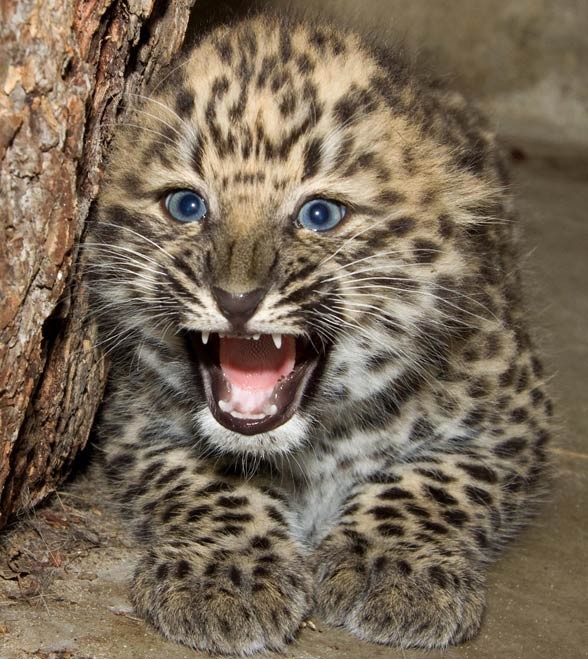
Details / Dimensions
The Leopard (Panthera pardus)
Size of the leopard
- Body length: 100 – 150 cm (3ft 3.4in – 4ft 11in)
- the largest one: 190 cm (6ft 2.8in) – the Persian leopard
- Tail length: up to 110 cm (3ft 7.3in)
- Height at shoulders: 60 – 80 cm (1ft 12in – 2ft 7.5in)
- Weight:
- female 60-80 kg (132 – 176lb)
- male 70-90 kg (154 – 198 lb)
- Lifespan:
- up to 12 years in the wild (record: 17 years)
- up to 25 years in captivity
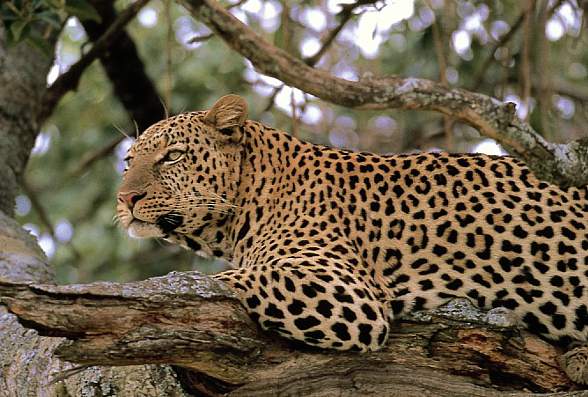
Leopard – interesting facts. Do you know that…?
- Leopard and panther are names for the same cat.
- Leopards are extremely strong. They can pull prey heavier than themselves high into the treetops.
- Leopards are excellent climbers and are known for their ability to drag their prey up into trees to eat in peace and safety. They are also strong swimmers and have been known to prey on fish and other aquatic animals.
- Leopards can come down a tree with their head toward the ground.
- Black panthers also have spots, but they are hardly visible.
- Young leopards are the favorite meal of… baboons.
- Each leopard has a unique spot pattern and can be easily identified on its basis.
- The black panther is more aggressive than other leopards.
- Leopards can leap for a distance of up to 7 meters.
- Particular species of leopards can vary in size and coloration.
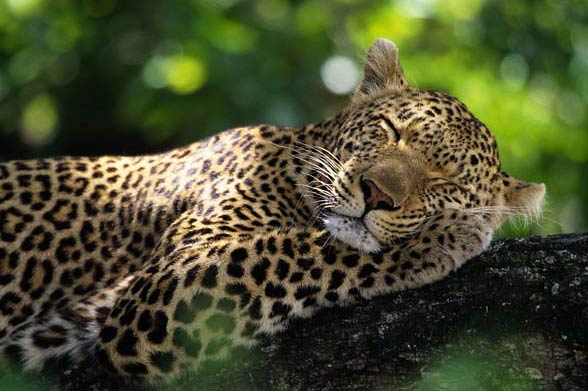

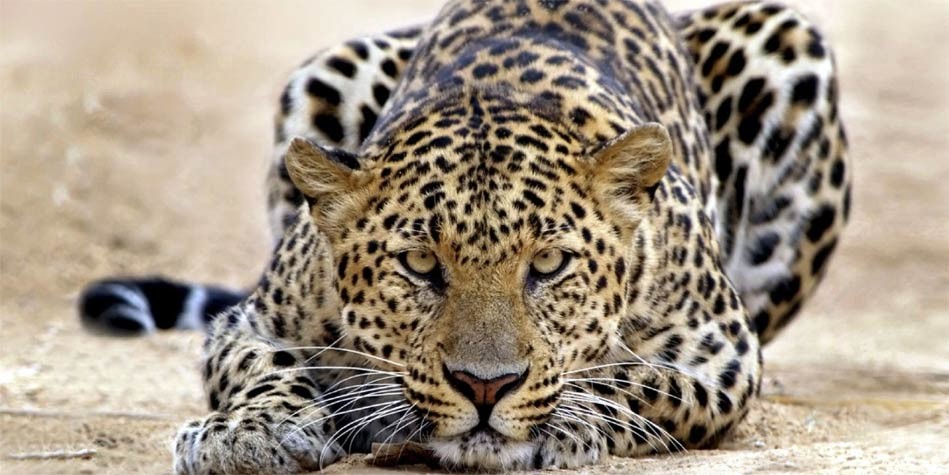



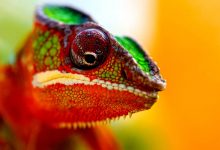



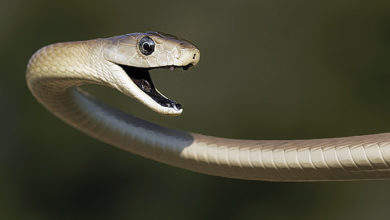
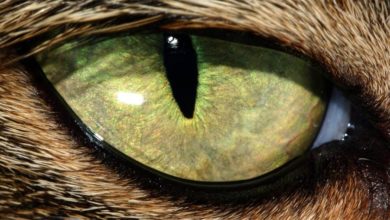








Great cat, incredible eyes. I love leopards!